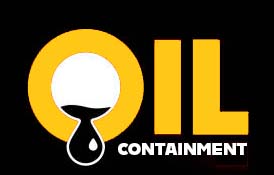In the oil industry, containment barriers play a critical role in preventing spills and leaks from causing harm to the environment and surrounding communities. These barriers are designed to provide secondary containment, ensuring that any potential leaks or spills are contained within a designated area. One popular material used in creating these barriers is polyurea, a versatile and durable coating that can withstand harsh environmental conditions. In this article, we will discuss the proper techniques for creating effective containment barriers in the oil industry using polyurea.
Understanding the Importance of Containment Barriers
Oil spills and leaks can have devastating effects on the environment, wildlife, and human health. It is crucial for oil companies to have proper containment barriers in place to prevent these incidents from occurring. Secondary containment refers to the practice of creating a second layer of protection around storage tanks, pipelines, or other equipment that contains oil or other hazardous materials. This secondary layer acts as a safeguard in the event of a primary containment failure, ensuring that any leaks or spills are contained and do not reach the surrounding environment.
Designing and Installing Containment Barriers
When designing containment barriers, it is important to consider the specific needs and requirements of the site. The first step is to assess the potential risks and hazards associated with the storage or transport of oil. This includes identifying potential sources of leaks or spills, as well as understanding the environmental conditions that may impact the effectiveness of the containment barrier.
Polyurea is an ideal material for creating containment barriers due to its high tensile strength, flexibility, and chemical resistance. It can be applied as a spray-on coating, forming a seamless and watertight barrier that can conform to the shape of any structure. Proper surface preparation is essential before applying polyurea, as any contaminants or imperfections can compromise the integrity of the coating.
During the installation process, it is important to ensure that the containment barrier is properly sealed and secured to prevent any gaps or breaches. Regular inspections and maintenance are also crucial to ensure the ongoing effectiveness of the barrier. Any signs of wear or damage should be addressed immediately to prevent potential leaks or spills.
Maintaining Containment Barriers
Once the containment barriers are in place, regular maintenance is essential to ensure their continued effectiveness. This includes periodic inspections to check for any signs of damage or wear, as well as cleaning the barrier to remove any debris or contaminants that may compromise its integrity. In the event of a spill or leak, it is important to have proper containment measures in place to prevent the spread of the contamination.
By following these guidelines and utilizing polyurea as a protective coating, oil companies can create effective containment barriers that help prevent environmental disasters and protect surrounding communities. Proper design, installation, and maintenance of these barriers are essential to ensuring their effectiveness in containing potential leaks or spills. By investing in proper containment barriers, oil companies can demonstrate their commitment to environmental stewardship and responsible resource management.
In conclusion, containment barriers play a crucial role in the oil industry in preventing spills and leaks from causing harm to the environment. By using polyurea as a coating material and following proper design, installation, and maintenance procedures, oil companies can create effective containment barriers that provide secondary protection against potential leaks or spills. It is important for companies in the oil industry to prioritize environmental safety and invest in proper containment measures to mitigate the risks associated with storing and transporting oil.
